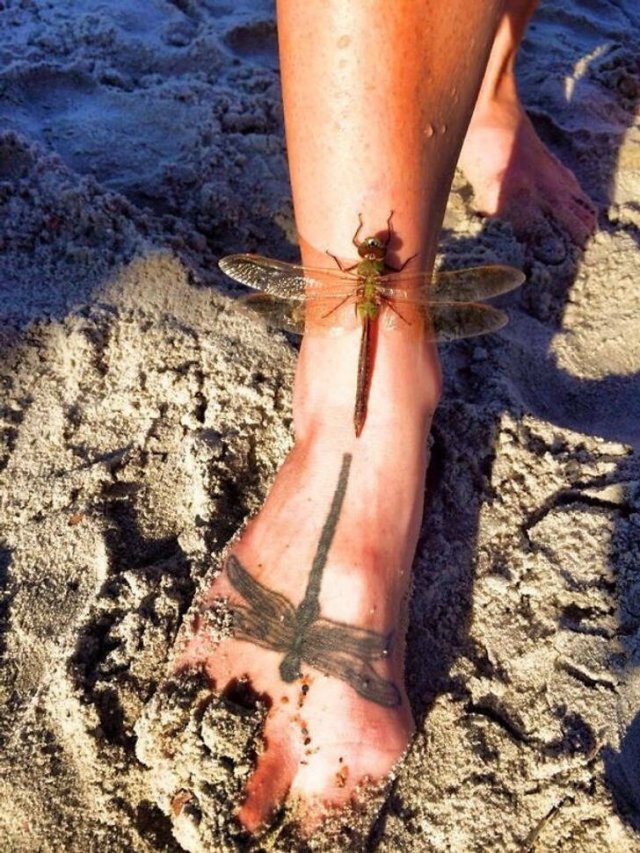The newest registered user is Menupanda
Our users have posted a total of 44848 messages in 6607 subjects

WORLD CLOCK
INFO VINE * The History of Climbing Mt. Everest *
Valley of the Sun Casual Club :: WORDS , FACTS , DATES , GAMES & TRIVIA & HISTORY :: INFORMATION VINE
 INFO VINE * The History of Climbing Mt. Everest *
INFO VINE * The History of Climbing Mt. Everest *

Photo Courtesy [Arsgera/Wikimedia Commons]
Mount Everest, the highest mountain above sea level, is one of the most popular mountains in the world! With pure gusto and confidence, many brave people have attempted to climb this beast of a landscape. Some have succeeded in making it to the highest peak, while some were not so lucky. Have you ever wondered what it would be like to hike such heights and endure the cold thin air that the famous peaks provide? You can either climb it yourself or check out this gallery of the history of climbing Mt. Everest. Let's get started!
Mount Everest
Before we get to the good stuff, you should have a clear perspective of how huge Mt. Everest is. The mountain is part of a collective chain of the Himalayan mountains that stretches across China and Nepal. According to the Chinese and Nepali authorities, the highest peak (summit) is approximately 8,848.86 meters high.

Photo Courtesy [Luca Galuzzi/Wikipedia]
For perspective, Mt. Everest is 5 1/2 miles high! It may not seem that high, but with the conditions that it provides, this is the most challenging 5 1/2 miles that anyone could engage in because it will take weeks or months to make it to the top.
Why Climb it?
Why do people climb Mt. Everest? Because of the pure thrill of it! If you've ever seen the mountain in person, it either scares you away or tempts you to start your ascension. Many people have also engaged in hiking the cold mountain based on bets, occupation, or even pride.

Photo Courtesy [Kriangkrai Thitimakorn/Moment/Getty Images]
The ultimate reason for climbing the famous Himalayan peak is for the sense of accomplishment. Once you reach the top of almost 9,000 meters, it can grant a sense of invincibility, strength, and peace. And for adrenaline junkies, this is the perfect goal to achieve for self and fame.
How Long Does It Take?
Many people wonder about the amount of time it takes to climb Mount Everest and the answer is here. On average, it takes 60-70 days to climb to the peak of the mountain. To start, you'll first have to walk from the parking lot of the hike station to the Everest Base Camp 1 which takes about 9 days.

Photo Courtesy [The New York Times/Wikimedia Commons]
Then, once at the base of the mountain, you'll go through Camps 2, 3, and 4, and that takes up to 40 days to climb to the highest height. Luckily, hiking down is faster and takes less time, about 7-10 days.
Mountain Range
Mount Everest is part of the Himalayas and is located specifically in the Mahalangur mountain range that stretches 50 miles across. Within this range, the summit of Mt. Everest lies from the southern border of Nepal all the way to the northern area of Tibet, which is a known city in China.

Photo Courtesy [The Los Angeles Times/Wikimedia Commons]
When (and if) climbers make it to the top, they have two places where they can celebrate their amazing feat. They can either celebrate on the South Base camp in Nepal at an altitude of 5,364 meters or on the North Base Camp in Tibet at 5,510 meters.
Cost of Climbing
Well, the highest cost of climbing Mount Everest is your life...however, there are other ways to pay to reach the top. The price range for an average supported Everest climb ranges between $28,000 and $85,000. If you want to skip corners and save a few thousand, you could pay around $20,000.

Photo Courtesy [What It Cost/Wikipedia]
For those that want the custom experience, expect to pay a standard of approximately $115,000. Since the 1920s, the price has only increased due to transportation, license, permits, insurances, and base camp accommodations like camp tents, food, and supplemental oxygen.
South Base Camp
Lukla is the Southern Base Camp in Nepal. When starting on this side, this is the first part of reaching the peak of the entire mountain. The purpose of this base camp is to help hikers become acclimated to the weather and air as it begins to thin as you get higher.

Photo Courtesy [Forbes/Wikimedia Commons]
You can reach Lukla after ascending 5,380 meters - or 17,600 feet. - If you have the resources, you can skip the trek altogether and simply fly into Lukla from the city of Kathmandu and pass through Namche Bazaar.
North Base Camp
The Northern Base Camp in Tibet is a bit more accessible due to modernization but has more red tape than the Southern Base Camp. The Northern Base Camp is located at the base of the mountain's glacier at an altitude of 5,150 meters (16,900 feet).

Photo Courtesy [Tibet Tours and Treks/Wikimedia Commons]
A visit to the North Base Camp - and Tibet itself - requires a permit from the Chinese government. Once obtained, the base is accessed by car via the Friendship Highway. A bus is then required for the rest of the trip to the Rongbuk Monastery, where tourists can rest and prepare for the rest of the hike.
Great Trigonometric Survey
In 1802, the British began the Great Trigonometric Survey of India to fix the locations, heights, and names of the world's tallest mountains. They began in southern India and moved northward using giant theodolites that required 12 men to carry. By the 1830s, they reached the foothills, but Nepal was unwilling to let the British enter their country due to suspension.

Photo Courtesy [Government of India/Wikipedia]
The British were forced to continue their expedition from the south of Nepal with horrible contentions. Three survey officers died from malaria and another two had fallen ill due to the environmental conditions.
18 Various Routes
In total, there are 18 various routes to reach the top of Mt. Everest. Many climbers choose to take the Northeast Ridge Standard (also known as "North Col Route" - because there are fewer crowds, a slightly shorter summit at night, and you can drive to the base camp. The shortcoming is the colder temperature, and no space for a helicopter rescue, if necessary.

Photo Courtesy [NASA/Wikimedia Commons]
The South Col Route is more popular, which means more crowds with the possibility of ice falling as you climb. On the contrary, it's slightly warmer, has space for helicopters, and has easy access to villages for pre-summit recovery.
What is A Sherpa?
You'll see the word "Sherpa" used when learning about the history of climbing Mount Everest, but do you know what it means? The Sherpa are the astonishing indigenous people who live in the Khumbu Valley of the Himalayan region. They assist westerners and other hikers in accessing and ascending Everest and the other peaks.

Photo Courtesy [Pysh/Wikiwand]
The Sherpa are friendly people and take serious pride in knowing the ropes of the mountain. Without the Sherpa helping to assist in carrying vital items like oxygen and guiding the way, trekking through Everest would be nearly impossible for anyone that attempted.
Sherpa Benefits
The Sherpa have been a part of the mountain engineering of Everest since before the first ascend in 1921. Because of their guidance, wisdom, and love for climbing the mountain, many Sherpa have also been claimed by the mountain in the name of exploration.

Photo Courtesy [Westend61/Getty Images]
Many families have lost their loved ones and for that, the Sherpa community has benefited. Several funds have been started to assist the families of Sherpa that have been left behind as they continue to assist people looking to claim mountainous victory.
Sir George Everest
Why is the mountain called "Mt. Everest"? It wasn't born with that name, right? The history of the name started back in 1841 with a British surveyor named Sir George Everest. He noticed that the Himalayas had an obscure height at the tip which piqued his interest.

Photo Courtesy [Google Arts & Culture/Wikimedia Commons]
To fulfill his curiosity, Sir George and his team scaled the mountain and were the first to notice its crevices and curves. As a result of his work and accomplished findings, the mountain was named after him in 1865 and has remained this way since then.
Radhanath Sikdar
Sir George Everest may have explored this particular part of the mountain, but he had plenty of help finding its peak. While working on the mapping of Calcutta, Bengal, Sir Everest began seeking assistance for completing the longitudinal series of the Great Trigonometric Survey.

Photo Courtesy [DNA India/Wikimedia Commons]
In 1832, a math professor suggested his star pupil, 19-year-old Radhanath Sikdar. By reading Isaac Newton's Principia and Euclid's Elements, he was able to help superbly. Today, Sikdar is noted for calculating the peak of Mt. Everest.
Andrew Waugh
In November of 1847, the British Surveyor General of India, Andrew Waugh, made the observation that Kanchenjunga was considered the highest peak, but that wasn't the case. His subordinate, John Armstrong, scaled it as peak "B" claiming that there was a higher one several miles behind the original peak.

Photo Courtesy [Artware Fine Art/Wikimedia Commons]
Over the next five years, Indian and British surveyors mapped the mountain to determine the height of the surrounding peaks. Many lost their lives in the name of exploration, while others stood the chance of finding proof of the tallest summit in the world.
The Alpine Club
In 1885, the premier attempt to scale Mt. Everest was conducted by the Alpine Club, a London-based organization that was deemed the world's first mountaineering club. Their goal was to support mountaineers who climbed in the Alps and the Greater Ranges of the world's mountains.

Photo Courtesy [German Alpine/Wikiwand]
Then-president, Clinton Thomas Dent, made the suggestion that climbing the famous mountain was possible and noted it in his book, Above the Snow Line. When asked to generalize why he thought it was possible to reach the peak, it was stated in his book "because it's there." The club has reached different countries including Germany, featured here.
Historical Risks
From the early 1900s, there have been and still are, multiple risks with climbing Mount Everest. Despite these risks, on average, 800 people attempt to climb the astonishing landscape each year. The risks involved with scaling the mountain are great, even for those that have done it multiple times.

Photo Courtesy [Westend61/Getty Images]
Including death, hikers can experience fatigue, even with the use of bottled oxygen. Nausea, vomiting, hypothermia, and frostbite are also heavy effects of scaling the mountain. Psychological issues can also become a problem due to the experiences of taking on such a challenge.
HAPE
The list of physical ailments that comes from climbing Mt. Everest continues. Hallucinations are also prominent, as well as past and present hikers having experienced HAPE, or high altitude pulmonary edema, in Mt. Everest's "Death Zone".

Photo Courtesy [SnowBrains/Wikimedia Commons]
Its symptoms are apparent and deadly including fluid build-up in the lunges, extreme tiredness, and total body weakness exhibited in this featured lone climber. Coughing is a part of the HAPE and is said to have been the cause of many climbers' death by choking on their own bodily fluids.
HACE
To add to the scary imagery of the "Death Zone", a climber's brain is also impacted. When you mix major loss of oxygen with the force of pushing your body to the limit, it causes swelling of the brain, which leads to high altitude cerebral edema, better known by hikers as "HACE".

Photo Courtesy [Deccan Herald/WIkimedia Commons]
It was named in 1954 by physicians that examined climbers after their descend. HACE leads to difficulty thinking, nausea and vomiting from excess brain pressure. Climbers can forget where they are and make wrong turns, making the adventure even more life-threatening.
Climbing Season
Mt. Everest's standard climbing season is during the months of April and May. These two months are prime because they provide the clearest view for efficient hiking. Additionally, during these months, although it isn't much, the temperature is warmer, on average -15 degrees Fahrenheit.

Photo Courtesy [Kriangkrai Thitimakorn/Moment/Getty Images]
Some trekkers have even gone in mid-June, which some would say is the best time instead of May. Overall, its historical reputation has set April to June as the best - and only legal time - that the mountain can be climbed safely.
Weather Conditions
If you're thinking of climbing Mt. Everest before April or after June, Mother Nature will make you think twice. Mt. Everest has claimed plenty of climbers due to its freezing temperatures that range from -2 degrees to - 76 degrees Fahrenheit.

Photo Courtesy [CNN/Wikimedia Commons]
Towards the end of the summer months, the monsoon season occurs in Nepal and Tibet. This causes extreme winds that can literally blow you off the mountain. Because of the peak being in the jet stream area, winds can exceed more than 80 miles per hour. In 2004, 175 mph winds were recorded at the peak of the mountain!
Khumbu Icefall
The famous Khumbu Icefall was first charted in the early 1950s and is known by climbers as one of the most dangerous sections of climbing Everest through the South Col Route. It's located at the height of 17,999 feet and has massive crevasses that pose significant threats to climbers.

Photo Courtesy [Picasa/Wikimedia Commons]
For prepared hikers, it can take more than 12 hours to condition for the hike and three to five hours to cross Khumbu Icefall. The icefall is due to the heat thawing the icicles and making them drop from above...scary, right? This is why climbers begin the journey before 4 am, while the air is still frigid.
Death Zone
It was discovered that there was a certain range of the mountain that could cause any hiker to experience adverse physical and psychological effects. With accuracy, it was nicknamed the "Death Zone". Khumba Icefalls is also the center of this feared area.

Photo Courtesy [The New York Times/Wikimedia Commons]
It's located 26,247 feet (8,000 meters) above sea level and climbers must prepare their bodies for the higher altitudes. Once in the zone, oxygen is decreased by 40%, along with the added bonus of physical exertion of climbing the mountain. It's been compared to running at top speed while breathing through a straw...imagine that!
Initial Attempt
Before the first successful summit, there had been a primary attempt by two British expedition teams. The first team tried their luck in 1921, but their bodies were not properly acclimated to reach the top and they collapsed mid-climb.

Photo Courtesy [BBC/Wikimedia Commons]
The second team attempted to avenge the first in 1922. Their bravery has been remembered; however, they were not documented in the books because they, too, did not make it to the peak. This was the start of both intellectual exploration and pride that drove many to take on the Mt. Everest challenge.
1921 Expedition
During the 1921 British Reconnaissance Expedition, George Mallory (featured) and Guy Bullock discovered the northern approach up Mt. Everest. They climbed the North Col Route to a height of 7,005 meters (22,982 feet) with gusto and decided to stop due to weather conditions.

Photo Courtesy [George Mallory/IMDb]
As they scaled the terrain, Mallory determined a more efficient route to continue moving forward. However, the team was ill-prepared and decided not to continue the journey until they had the proper equipment for success and preservation for all the lives involved in the expedition.
1922 Expedition
One year later in 1922, the British team returned to continue their excursion. An Australian alpinist by the name of George Finch (featured) is important because he was the first person to ever climb the mountain using oxygen. Because of it, he was able to climb 951 feet (290 meters) per hour and reached an altitude of 27,300 feet!

Photo Courtesy [The Australian/Wikimedia]
He is noted for being the first human to ever hike higher than 8,000 meters. Mallory and Felix Nortan tried to follow in his footsteps but were unsuccessful in their attempt to match Finch's record.
1924 Excursion
George Mallory (back, second from left) led another exploration in 1924. Yet, the exploration was shut down due to the weather conditions preventing the ascend to base camp 4. After reconfiguring their plan, two more explorers, Edward Norton (back, second from right) and Theodore Somervell (center back) joined and tried their luck.

Photo Courtesy [Secrets of the Ice/Wikimedia Commons]
With spectacular weather conditions and no access to oxygen, the two hikers trekked the North Face into the Great Couloir and reached 8,550 meters (28,050 ft). With success almost at hand, Mallory decided to choose a new partner, a man named Andrew Irvine.
George and Andrew
Two years following the failed attempts of the British excursion, another team of British go-getters tried their hand at conquering the mountain top. Andrew Irvine (left) and George Mallory (right) took their chances and made it 800 feet from the peak of the mountain.

Photo Courtesy [Navrangindia/Wikimedia Commons]
Yet, even through their progress, the unstable weather conditions of the environment took the lives of these explorers. George Mallory's body was found 75 years later buried deep beneath the Tibetan ice. When it comes to Irvine, his body was never recovered, and the mystery of whether he made it to the peak still remains to this day.
Houston Everest Flight of 1933
The British were obsessed with successfully reaching the summit of Mt. Everest. To prove it, a British millionairess named Dame Fanny Lucy Houston, also known as "Lady Houston", pulled her resources to fund the Houston Everest Flight of 1933.

Photo Courtesy [National Portrait Gallery/WIkipedia]
The goal was the create the formation of two airplanes to fly over Mt. Everest to have a better perspective of trails that could help her counterparts reach the top. The task was conducted by Sir Douglas Hamilton and David McIntyre on April 3, during climbing season.
Decade of Challenges
From the 1933 expedition to 1950, hikers and explores had a challenging time reaching their ultimate goal of conquering Mt. Everest because of new laws, stipulations, camp closures, and death. In 1936, a man by the name of Hugh Ruttledge had two failed attempts trying to ascend to the summit.

Photo Courtesy [Harold William Tilman/Wikipedia]
Access was also closed from the north to explorers from America and Great Britain because China had taken control of Tibet. Thanks to explorer Bill Tilman (featured) and his exploratory expedition through Nepal, the new route became the standard approach of reaching Everest through the south.
Swiss Expedition
The Swiss obtained their spot in the history of climbing Mt. Everest during their 1952 expedition. It was led by Edouard Wyss-Dunant (featured) because he was one of the few Swiss members to be granted permission to climb from Nepal. Through the Kumbu Icefall and the South Col, he and his team elevated to 26,201 feet.

Photo Courtesy [Eduard Wyss-Dunant/Wikipedia]
Raymond Lambert, a Swiss mountaineer, also reached an altitude of 28,199 feet on the southeast ridge. His expedition set a new climbing altitude record for Swiss explorers.
First Success
After several attempts, Mount Everest's peak was first stood upon by the next British explorer, Edmund Hillary (right) from New Zealand, and Sherpa Tenzing Norgay (left) from Nepal on May 29, 1953. These two men decided to take the South Col Route in Nepal.

Photo Courtesy [Alan Arnette/Wikimedia Commons]
Part of their success was the fact that Norgay was with the team that attempted the climb in 1952, so he had a better layout of the land. The duo was led by expedition leader Colonel John Hunt and their victory was celebrated. Their feat made them world-famous and placed them in the history books for all future challengers to aspire to.
Expedition Rewards
Once Tenzing and Edmund reached the top, word spread around the Western countries and caught the ear of Queen Elizabeth II during the morning of her coronation on June 2. To exercise her power, one of her first mandates was to reward Hillary and his team for their amazing accomplishment.

Photo Courtesy [Sherpatenzingnorgay/Wikiwand]
Both John Hunt - a Briton explorer - and Edmund Hillary were knighted in the Order of the British Empire for their ascent to the top of Mt. Everest. Tenzing was granted the George Medal by the United Kingdom as well (featured). Tenzing and Edmund were also recognized in Nepal and statues were raised in their honor in 2009.
Decade of Success
Following the coronation of Queen Elizabeth II and the rewards for climbing Mt. Everest, many challengers were driven to take on the obstacle and were successful for it. Swiss explorers Ernst Schmied and Juerg Marmet were next to complete the ascend on May 23, 1956. Dolf Reist and Hansruedi von Gunten followed a year later in 1957.

Photo Courtesy [CNN/Wikiwand]
Chinese explorers Wang Fuzhou, Gonpo, and Qu Yinhua made their first reported ascent of the peak via the North Ridge in May 1960 since they had access to the Northern Col. America saddled up and completed the feat in May 1963 thanks to Jim Whittaker (left) and Sherpa Nawang Gombu (right).
Japanese Expedition
1970 was the year of Japanese exploration. They had a major "siege"-style expedition that was led by Saburo Matsukata with the goal of finding a new route through the southwest face of the mountain. The Japanese team also had the idea to be the first to ski down Mt. Everest.

Photo Courtesy [Mpora/Wikimedia Commons]
The team consisted of more than 100 members and took 10 years to plan. Although eight people died, the survivors were granted some success. Yuichiro Miura (featured) was the first man to ski down Everest on the south side and was the oldest person to summit Mt. Everest at age 70 and again at age 80.
Mount Everest Disaster
After the success of skiing down Mt. Everest, a documentary called The Man Who Skied Down Everest was in production when one of the largest phenomenons happened. During filming, an ice-fall avalanche in the Khumba Icefall occurred and killed six Nepalese Sherpas.

Photo Courtesy [The Man Who Skied Down Everest/IMDb]
The ice-fall was the location of many fatalities, although, as history has proved, Yuichiro Miura was not one of them. The fallen included Mima Norbu, Nima Dorje, Tschering Tarkey, Pasang, Kunga Norbu, and Kami Tshering. May they continue to rest in peace.
1970s Climbing Successes
The mid-1970s also brought more historical moments to the history of climbing Mt. Everest. In 1975, a Japanese mountaineer, author, and teacher by the name of Junko Tabei (featured) was the first Japanese woman to reach the peak of Mt. Everest. She is also the first woman to ascend the Seven Summits, climbing the highest peak on every continent!

Photo Courtesy [John van Hasselt/Corbis Historical/Getty Images]
Three years later in 1978, Italian mountaineer Reinhold Messner and Italian hiker Peter Habeler made the first ascent of Everest without the use of supplemental oxygen. Many others have tried to match this record but have failed horribly.
Poland's Success
Poland entered the ranks of successful climbers in 1980. Polish hiker Andrzej Zawada (featured) led the first part of the ascent to the peak of Mt. Everest with a team of 20 Polish climbers and 4 Sherpas. On January 15, 1980, the team made it to Camp 3 at 7,150 meters but because of hurricane-speed winds, ascension was paused.

Photo Courtesy [Andrzej Zawada/Wikipedia]
A month later, the weather was clear to continue and their fourth camp was set up on South Col. On the 17th of February, "we're on the summit!" was heard over the radio. Since then, the Polish climbers have climbed the mountain ten times, becoming known as the "Ice Warriors."
Paragliding Mt. Everest
Other interesting feats occurred on Mt. Everest outside of simply climbing to its peak. Having reached the top of the mountain and wanting to have some fun, a man by the name of Jean-Marc Boivin decided to do something courageous and creative.

Photo Courtesy [Rene Robert/Wikimedia Commons]
With all his equipment and faith, On September 26, 1988, Boivin made the first paraglide descent of Mt. Everest. Because he flew down instead of trekking, Jean-Marc also established the record for the fastest descent of Everest in 11 minutes! He would try this again in 1990, but unfortunately, he was unsuccessful and it caused his death.
Hot Air Balloon Flyover
Did you know that the first hot-air balloon flight over Mount Everest occurred in 1991? It's interesting to think about right? Andy Elson, Eric Jones, Christ Dewhirst, and Leo Dickinson used two hot-air balloons and two cameras to reach up to 40,000 feet, and they were very successful.

Photo Courtesy [Altitude Himalaya/Wikiwand]
So successful that one of the panoramic shots captured was considered the "best snap on Earth", according to The Telegraph, a United Kingdom newspaper. Dewhirst conjured an entrepreneurial spirit and offered to take passengers on a repeat of this accomplishment for $2.6 million per passenger!
Tragedy Strikes (Again)
The Polish decided to build on their ten successes by organizing an international expedition to Mount Everest via one of the more difficult routes on the western ridge. A total of 19 people began the journey, yet the Polish were the people that made it to the summit due to their prior experiences.

Photo Courtesy [Alan Arnette/Wikimedia Commons]
Unfortunately, it ended in demise on May 27, 1989. On the Lho La Pass, an avalanche occurred and four Polish hikers were killed and many more were injured. The next day, another Polish explorer died from injuries, while three others had to be rescued from further avalanches that were to come.
1996 Mount Everest Disaster
Many people found the courage to climb Mount Everest as it became a commercialized adventure to take on the mountain. Yet, lives were taken from those who were not prepared for what Mother Nature had to offer. 1996 was a year of high death tolls during the month of May, despite the supposed acceptable weather.

Photo Courtesy [Uphill Athlete/Wikimedia Commons]
Between the 10th and 11th of May, eight climbers were frozen to death due to being caught in a blizzard. That month, in total, 15 mountaineers died on Mount Everest. The most notable was the death of the climber in "green boots" (featured)
Decade of Research
The "1996 Mount Everest Disaster" created much controversy over the next ten years. Journalists from various magazines used their outlets to spread the word about the dangers of climbing Mt. Everest. Researchers also conducted studies to find out why those particular days were so different from all the others.

Photo Courtesy [Everest/IMDb]
Survivors served as Adventure Consultants to help others gain a realistic perspective of ascending through the rough weather conditions and terrain. Even the Nepal Army was deployed to set up rescue stations near the established camp bases. The 2015 film, Everest, is based on this disaster of guided tours.
Sir Edmund Hillary Foundation
Despite the deaths, the feat of Sir Edmund and Tenzing Norgay climbing the mountain was so impressive, that in addition to statues and having a peak named after him, an organization was set up in his name. In 2002, The Sir Edmund Hillary Mountain Legacy Medal was created by Edmund himself and established by the Namche Consensus.

Photo Courtesy [Hillary Medal/Wikimedia Commons]
The medal is awarded every one or two years to an individual for "remarkable service in the conservation of culture and nature in mountainous regions." The first medal was awarded in 2003 to Michael Schmitz and Helen Cawley for renovating the Tengboche Monastery in Khumbu, Nepal.
International Controversy
Debates continued into 2006 based on the ethics of allowing people to hike Mt. Everest without a specific geological or national reason. In 2006, another avalanche occurred and killed 12 people. A man by the name of Lincoln Hall was proclaimed dead but was later found alive and rescued. This incident started the new millennium debates.

Photo Courtesy [Mystery U/Wikiwand]
That same year, the death of British climber David Sharp was released, and critiques started to stew around the mountaineering community concerning the worth of hiking the great mountain, potentially in exchange for life.
Modern Ascents
Since the first ascent to the 2010 climbing season, approximately 5,104 ascents had been attempted to reach the summit, with 3,142 individuals reaching the summit. That's a 77% success rate and was a serious confidence boost to many mountaineers still wanting to reach the peak.

Photo Courtesy [Lakpa Sherpa/AFP/Getty Images]
In the first half of 2010, 633 ascents were recorded by 350 climbers and 253 sherpas. On average, there could be as many as 33 to 36 people climbing the mountain at one time! However, in all its success, there was a fatality rate of 4 deaths per 100 people.
Nepali Deaths
2014 was a memorable and unfortunate year for many citizens of Nepal that made the Nepali government return to the ethical drawing board of determining whether hiking Mt. Everest was necessary. On April 18, there was another avalanche that happened right above the level of the clouds.

Photo Courtesy [Alan Arnette/Wikimedia Commons]
At approximately, 19,400 ft, 25 people were caught in the avalanche. The damages included nine injured climbers and 16 deaths. What made it a national situation was that all 16 of the deaths were Nepali guides. This incident shook up the fate of the Nepali guide system and caused a strike to mourn the death of their fallen.
Malavath Poorna
After the death of the Nepali guides, a young girl decided to avenge them and take on the challenge in the name of the fallen. During that season, a 13-year old girl by the name of Malavath Poorna trekked to the peak and became the youngest female climber to reach the top of Mt. Everest.

Photo Courtesy [The Hindu/Wikimedia Commons]
To avoid her potential death, she was rescued by helicopter from the South Base camp to the Camp 2 site. For her effort and ultimate success, she was named the Nepali "International Mountaineer of the Year."
Helicopter Business
In 2014, the first helicopter-assisted ascent took place and was led by mountaineer Wang Jing. It may seem like cheating, but the purpose was to avoid the Khumbu Icefall and reach Camp 2 which was located right after the icy death zone.

Photo Courtesy [Tashi Sherpa/Wikimedia Commons]
With her success, the helicopter business began to boom in 2016 because of its efficiency in carrying the materials and saving the lives of hundreds of hikers. Considering the death of the Nepali guides in 2014, the government was more than willing to allow helicopters to do a majority of the work and boosted the Nepali economy.
How Many Climbers?
As of April 2021, it is documented that 5,788 different people have attempted to hike Mt. Everest. Of those, 4,000 of them are considered successful climbers because they reached the peak of this natural monument. For proper documentation, even if a climber hikes to the peak multiple times, only their first summit date is listed.

Photo Courtesy [Uphill Athlete/Wikiwand]
According to The Himalayan Database, a majority of the hikers are from three main countries. Nepal has the most with 1,570 summit achievers, while the United States of America ranks second with 682, and India follows with 488 hikers.
Fake Ascents?
Yes, there have been many "climbers" to fake reaching the peak of Mt. Everest. In 2016, three Indians created images that supposedly proved that they trekked the height of the mountain. Additionally, a year later in 2017, two Indian police officers claimed to be the first couple to ascend Mt. Everest.

Photo Courtesy [ThoughtCo/Wikimedia Commons]
After researching, it was determined that these images were fakes. As a result, Nepal banned these individuals from the city. In the end, climbing Everest is not easy, but possible. So, if you ever try it, be sure to use your legs or a helicopter instead of Photoshop!
 Similar topics
Similar topics» INFO VINE * The History of Money *
» INFO VINE * The History of Prince *
» INFO VINE * The History of The Pentagon *
» INFO VINE * The History of Medicine *
Valley of the Sun Casual Club :: WORDS , FACTS , DATES , GAMES & TRIVIA & HISTORY :: INFORMATION VINE

 Events
Events















































































» BEFORE & AFTER...2
» COSPLAY...2
» WEATHER...3
» HISTORY FACTS * How people escaped past the Berlin Wall *
» US TRIVIA QUIZ * Which of these sports was invented by a YMCA teacher? *
» US TRIVIA ANSWER PAGE
» MAY NATIONAL CELEBRATION DAYS MAY 8 2024
» MAY NATIONAL CELEBRATION DAYS MAY 7 2024
» AWE WITTLE PUPPIES BUNNIES & KITTIES...5
» GIRL FISHING...2
» GIRL FISHING
» HISTORY FACTS *Which President was at Lincoln's funeral? *
» MAY NATIONAL CELEBRATION DAYS MAY 6 2024
» AS ETASKI * Etaski just shared: "Eris Book Sale Today Only! My Website Status, etc." *